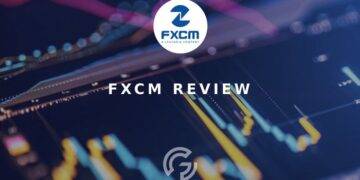Before drafting your ecommerce RFP, take the time to define the precise scope of your project. Many businesses rush into sending out RFPs with vague statements like “we want a modern website” without clarifying the desired features, integrations, or business objectives. Instead, detail what you want your ecommerce site to achieve—whether that’s increasing conversion rates, supporting multiple currencies for global sales, integrating with specific inventory systems, or improving mobile shopping experiences.
Image source: pexels.com
For example, a mid-sized fashion retailer might specify the need for a responsive design, real-time inventory syncing with their brick-and-mortar stores, and support for high-quality video content. These details give potential partners a clear picture of the project’s complexity and help them accurately estimate timelines and costs.
To execute this step, gather input from stakeholders across marketing, sales, IT, and customer service. Hold workshops or interviews to identify pain points and wishlist features. Document this information in your RFP’s background and objectives section so vendors understand both the “what” and the “why” of your project.
Provide Detailed Functional Requirements
A well-crafted RFP should include a detailed list of functional requirements to avoid miscommunication later. Instead of generic statements like “site should be easy to navigate,” specify actions or features you expect—for instance, layered navigation filters, wishlist functionality, customer account areas, and secure checkout processes.
Consider a company selling custom-printed merchandise. Their RFP might outline the need for a product customization tool allowing customers to upload artwork, preview designs on products, and receive dynamic pricing. Such specifics empower developers to assess technical feasibility and propose suitable solutions.
To create this list, analyze competitor websites, collect stakeholder input, and note features essential to your business model. Prioritize requirements into “must-haves” and “nice-to-haves.” This helps vendors propose realistic solutions that align with your budget and timeline.
Include Technical and Integration Specifications
Beyond front-end features, your ecommerce site will likely depend on complex integrations with systems like ERP, CRM, payment gateways, or marketing automation tools. Including technical specifications in your RFP ensures vendors assess whether their tech stack and experience match your ecosystem.
For instance, if your marketing team relies on HubSpot and your ERP is NetSuite, explicitly list these systems and describe the level of integration needed (e.g., real-time data sync, nightly batch updates). Such transparency helps avoid surprises during development and reduces the risk of costly scope changes.
To execute this, map out your current tech stack and highlight existing tools your ecommerce platform must communicate with. Involve IT and systems architects to define data flows and security protocols. Document these in a dedicated integrations section of your RFP.
Define Budget and Timeline Expectations
Being transparent about your budget and timeline prevents wasted efforts on both sides. According to a top digital marketing agency, many businesses fear revealing budgets, assuming it weakens their negotiating position. However, vendors need budgetary context to propose solutions within your means rather than developing proposals you can’t afford.
For example, a startup with a $50,000 budget shouldn’t invite proposals from agencies whose projects start at $300,000. Disclosing your range allows vendors to tailor recommendations—perhaps suggesting phased rollouts instead of full builds.
When preparing this section, analyze internal budgets, anticipated ROI, and critical launch dates (e.g., seasonal sales peaks). Clearly state whether your budget includes only development or also covers licenses, hosting, and post-launch maintenance. This clarity helps vendors create realistic proposals and avoid scope gaps.
Request Relevant Experience and Case Studies
Selecting a partner isn’t just about technical ability; you want confidence that they’ve solved similar challenges before. Your RFP should explicitly request vendors to provide case studies relevant to your industry, business size, or technical requirements.
For instance, a company planning to launch in multiple languages should seek partners who have built multilingual ecommerce sites with localized payment options. A past project where the vendor integrated a complex loyalty program can be highly relevant if that’s on your roadmap.
In your RFP, ask for links to live sites, project summaries, and measurable outcomes (e.g., increased conversions, improved site speed). Review these examples to assess whether the vendor’s style, expertise, and solutions fit your business vision.
Specify Proposal Structure and Evaluation Criteria
A clear proposal structure makes comparing vendors easier. Without guidance, proposals arrive in different formats, complicating evaluation. Provide a template outlining sections vendors should cover, such as company background, team bios, proposed solutions, timeline, budget, and support models.
Consider including weighted scoring for different criteria—for example: technical expertise (30%), ecommerce experience (25%), price (20%), timeline (15%), and client references (10%). This transparency signals your priorities and helps vendors emphasize relevant strengths.
To implement this, draft a scoring rubric in your RFP. Share how proposals will be judged so vendors can align responses to your expectations. It also streamlines internal decision-making by providing a consistent basis for discussions.
Communicate and Encourage Questions
Finally, keep the communication door open after sharing your RFP. Vendors often have clarifying questions that, if left unanswered, could lead to costly misinterpretations. Establish a structured Q&A period and provide a single point of contact for queries.
For example, you might set a two-week window for questions, then compile and distribute answers to all bidders to ensure fairness. This process not only demonstrates professionalism but also attracts vendors who value collaboration and transparency.
To execute this, list key dates for Q&A deadlines and responses in your RFP timeline. Encourage vendors to ask detailed questions rather than assuming your requirements are universally understood. This approach fosters stronger relationships and results in higher-quality proposals.
By following these steps and crafting a thoughtful ecommerce RFP, you’ll significantly improve your chances of attracting partners who truly understand your vision and have the capabilities to bring it to life.









